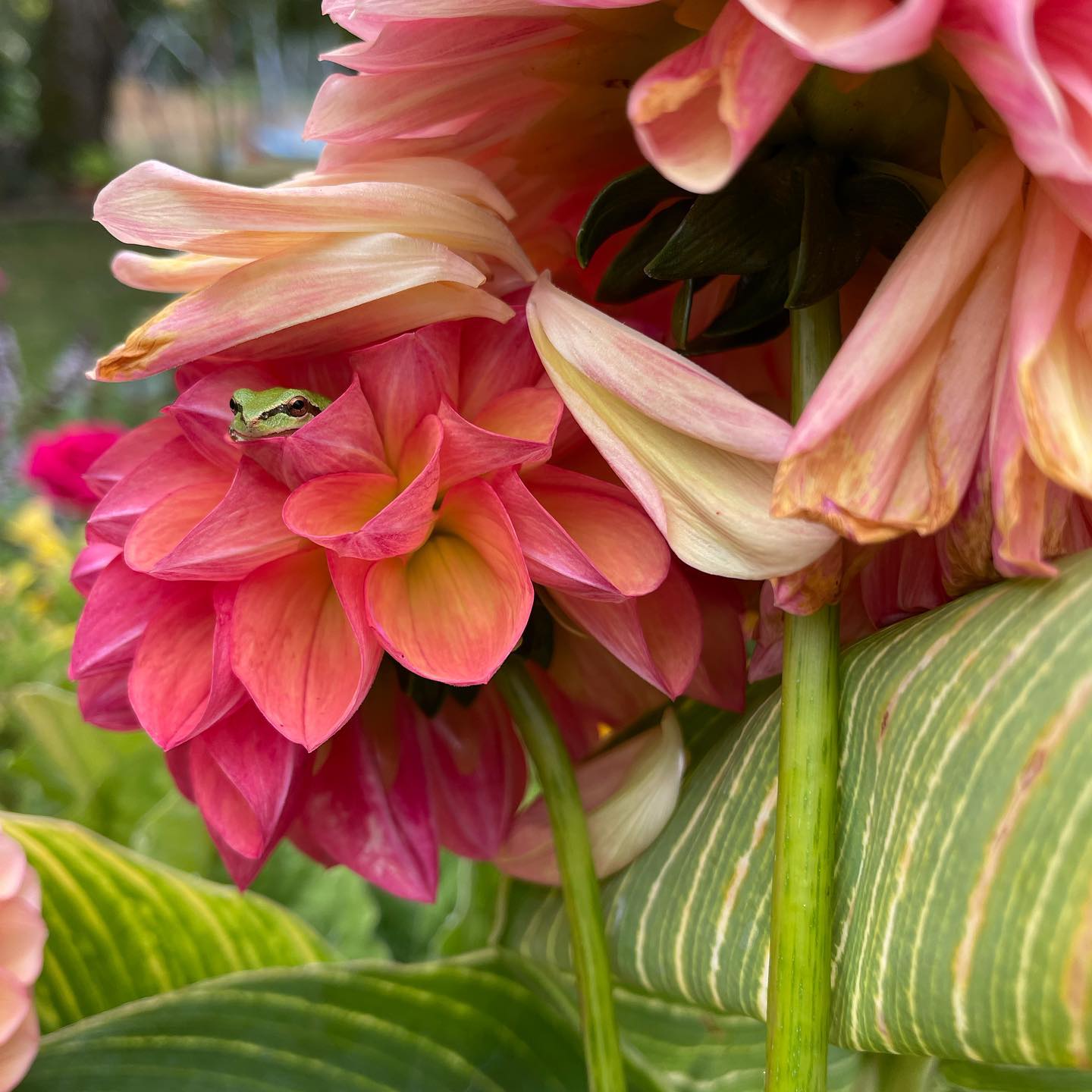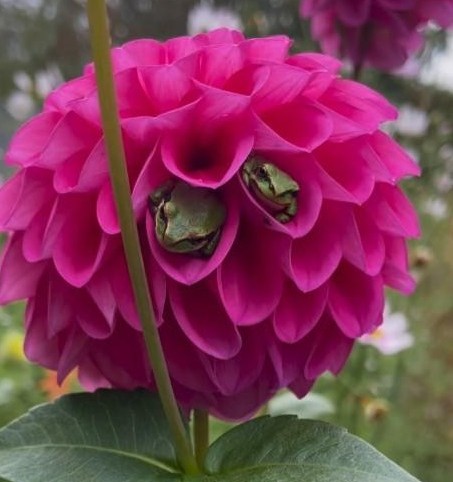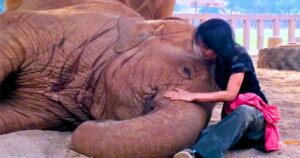In Snohomish, Washington, a gardener named Allison Lamb discovered something extraordinary in her flowerbeds — her dahlia blossoms had become a cozy “hotel” for small frogs. What began as a quiet spring morning turned into a celebration of nature’s little surprises.
Allison owns a lavender farm, where she also cultivates over 200 dahlia plants around her home. One day, while checking her flowers, she spotted a frog tucked inside a dahlia bloom. That was just the start. Over time, she began finding more — sometimes ten or more — frogs nestled among petals, using the flowers as shelter, perches, and resting spots.

At first, she saw one or two frogs hopping around the garden. But this pattern repeated daily. The frogs weren’t just passing through; they stayed. They climbed the walls, hid in hanging baskets, and took up residence in the flowers’ folds. For Allison, it was both surprising and endearing — the idea that her dahlias were doubling as frog homes.
Why frogs? It turns out they weren’t freeloading. These amphibians were on pest control duty. They feasted on insects that would otherwise harm the garden. In return, they got a safe haven. A mutual relationship: Allison’s blossoms offered shelter, and the frogs offered protection against bugs.

Through spring and summer, the frogs remained until the first frost. When the flowers wilted, the “guests” slipped away. But with each new spring, Allison expects them back. She watches for the frogs’ return with excitement, knowing her garden will again hum with life.
This story may seem small, but it’s a quiet reminder: animals and plants often form little alliances that escape our notice. A flower isn’t just beauty — it can be home. A frog isn’t just a croaking presence — it can be gardener, pollinator, protector.





